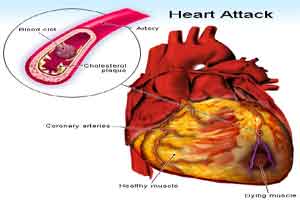- Home
- Editorial
- News
- Practice Guidelines
- Anesthesiology Guidelines
- Cancer Guidelines
- Cardiac Sciences Guidelines
- Critical Care Guidelines
- Dentistry Guidelines
- Dermatology Guidelines
- Diabetes and Endo Guidelines
- Diagnostics Guidelines
- ENT Guidelines
- Featured Practice Guidelines
- Gastroenterology Guidelines
- Geriatrics Guidelines
- Medicine Guidelines
- Nephrology Guidelines
- Neurosciences Guidelines
- Obs and Gynae Guidelines
- Ophthalmology Guidelines
- Orthopaedics Guidelines
- Paediatrics Guidelines
- Psychiatry Guidelines
- Pulmonology Guidelines
- Radiology Guidelines
- Surgery Guidelines
- Urology Guidelines
Arm-to-arm difference in BP ups heart attack risk: Study

Washington D.C : You may want to get your blood pressure checked in both arms as a recent study has suggested that a difference between the two readings can give an early warning about increased risk of heart disease.
The University of Exeter Medical School led an analysis of more than 3,000 people in Scotland who each had blood pressure measurements taken from both arms. Researchers say the findings show the importance of routinely measuring blood pressure in both arms.
The team found that a difference in systolic blood pressure measurements between the two arms (of 5mm Hg) was associated with almost double the risk of death from heart-related disease, when the cohort was followed up over a period of eight years. In the analysis, which was based on one pair of blood pressure readings, 60 per cent of the cohort had this difference.
The researchers wanted to examine this single check of blood pressure in both arms to reflect currently available measurement methods in general practice. It is known, however, that the proportion of people confirmed to have a blood pressure difference will fall substantially on repeated testing.
Dr Chris Clark said that this study confirms that people identified with only a single pair of measurements are still at higher risk of heart disease than those without an inter-arm difference. Repeated assessments to confirm the existence of an inter-arm difference and suitable lifestyle advice can then be targeted at individuals identified in this way and could make a difference to their future health.
He added that the next stage of our research is to quantify the extra risk that an inter-arm difference indicates, and after that, to discover the extent to which this can be protected against.
Professor Jeremy Pearson noted that this study found that healthy people without pre-existing heart disease may also have an increased risk. The findings support current guidance that blood pressure should be measured in both arms when assessing someone for hypertension.
The study appears in journal British Journal of General Practice.

Disclaimer: This site is primarily intended for healthcare professionals. Any content/information on this website does not replace the advice of medical and/or health professionals and should not be construed as medical/diagnostic advice/endorsement or prescription. Use of this site is subject to our terms of use, privacy policy, advertisement policy. © 2020 Minerva Medical Treatment Pvt Ltd